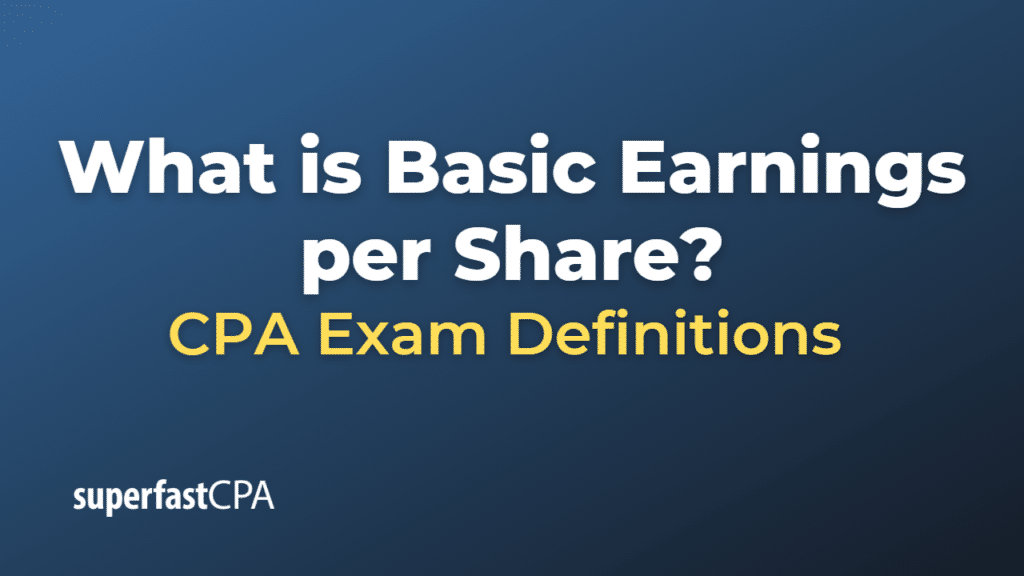Basic Earnings per Share
Basic Earnings Per Share (EPS) is a financial metric that measures the profitability of a company on a per-share basis. It is calculated by dividing the net income attributable to common shareholders by the weighted average number of common shares outstanding during a specific period.
Basic EPS Formula:
\(\text{Basic EPS} = \frac{\text{Net Income – Preferred Dividends}}{\text{Weighted Average Number of Common Shares Outstanding}} \)
Here’s a brief explanation of each component of the formula:
- Net Income: Net income represents the total earnings of a company after deducting all expenses, including taxes and interest, from its revenue. It is an indicator of the company’s profitability.
- Preferred Dividends: Preferred dividends are the dividends paid to preferred shareholders. These dividends are subtracted from net income because basic EPS focuses on the earnings available to common shareholders.
- Weighted Average Number of Common Shares Outstanding: This figure represents the average number of common shares outstanding during a specific period, adjusted for any changes in the number of shares (such as stock splits, buybacks, or issuance of new shares). The weighted average is used to ensure that changes in the number of shares throughout the period are accurately reflected in the calculation.
Basic EPS is an important measure for investors and analysts because it provides insight into a company’s profitability on a per-share basis, which can be useful for comparing the performance of different companies or tracking a company’s performance over time. However, it’s important to note that basic EPS does not account for the potential dilution of shares caused by convertible securities, stock options, or other instruments that could increase the number of shares outstanding. To account for potential dilution, companies also report diluted earnings per share, which is a more conservative measure of profitability.
Example of Basic Earnings per Share
Let’s use a fictional example to illustrate the calculation of basic earnings per share (EPS). Consider a company called “ABC Tech Inc.”
For the financial year 2022, ABC Tech Inc. reports the following figures:
- Net Income: $5,000,000
- Preferred Dividends: $500,000
- Common Shares Outstanding at the beginning of the year: 1,000,000 shares
- Common Shares Outstanding at the end of the year: 1,200,000 shares
To calculate the basic EPS, we first need to find the weighted average number of common shares outstanding during the year. Since the number of shares increased evenly throughout the year, we can simply take the average:
\(\text{Weighted Average Number of Common Shares Outstanding} = \frac{\text{1,000,000 + 1,200,000}}{2} \)
\(\text{ = 1,100,000 shares} \)
Next, we subtract the preferred dividends from the net income to find the earnings available to common shareholders:
Earnings available to common shareholders = Net Income – Preferred Dividends = $5,000,000 – $500,000
= $4,500,000
Finally, we divide the earnings available to common shareholders by the weighted average number of common shares outstanding to calculate the basic EPS:
\(\text{Basic EPS} = \frac{4,500,000}{1,100,000} = 4.09 \)
So, the basic earnings per share for ABC Tech Inc. for the financial year 2022 is $4.09. This means that for every common share outstanding, the company generated a profit of $4.09 during the year.
Keep in mind that this is a simplified example, and real-world calculations may be more complex due to factors such as stock splits, share buybacks, and the issuance of new shares. Nonetheless, this example demonstrates the basic concept and calculation of the basic earnings per share (EPS) metric.













